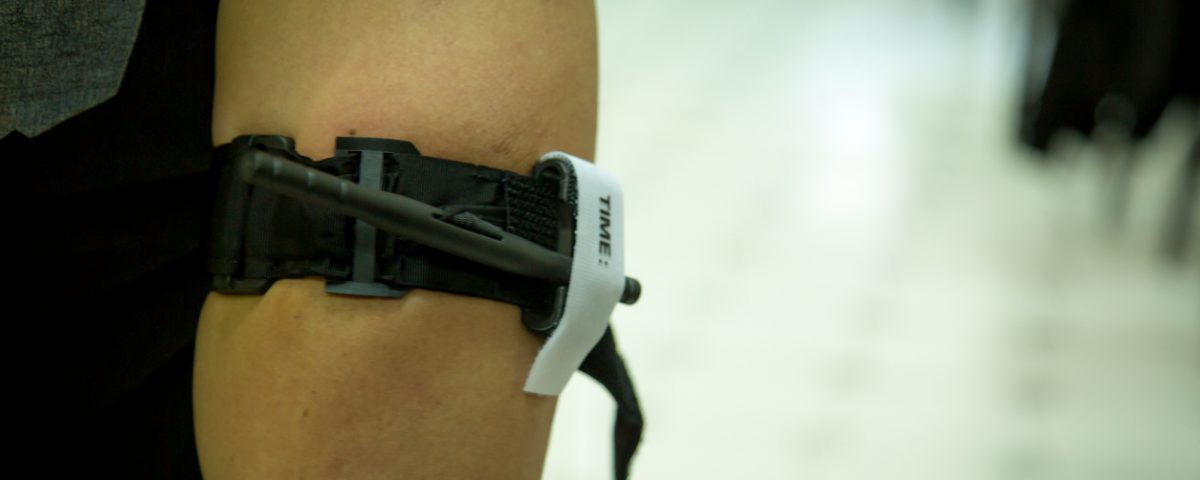- Have any questions?
- 412-123-4567
- noreply@upmc.com
How to Use a Tourniquet

Uncontrolled bleeding is the number one cause of preventable death from trauma in the United States. An adult can die from blood loss in just a few minutes if there is no intervention. If you witness someone bleeding uncontrollably - whether from a car accident, gun violence, natural disaster, or other emergency or accident - it's important to ensure your own safety first. If you are safe, call 911 immediately or direct someone else to. Next, look for the source of bleeding. If the person's injury is on their arm or leg, a tourniquet can potentially save their life.
What Is a Tourniquet?
A tourniquet is a professional or “official" device that has certain standard parts. Tourniquets are used in an emergency situation to temporarily constrict and control blood flow. A tourniquet should only be used on arms and legs and looks like a strap with a buckle and a long, skinny handle. Tourniquets are typically included in most trauma first aid kits and can also be purchased online from a medical goods store or the American Red Cross.
When Should You Use a Tourniquet?
Before using a tourniquet, try to first stop the bleeding by applying direct pressure to the wound. If you cannot stop the bleeding with direct pressure, a tourniquet should be used.
How Do You Apply a Tourniquet?
- Before you apply a tourniquet, it is important that you tell the injured person that it is going to hurt.
- You can apply a tourniquet to bare skin or over clothing.
- Place the tourniquet high and tight on the extremity (arm or leg), near the armpit or groin.
- Pull the “tail" strap of the tourniquet tight and twist the windlass until the bleeding stops. Secure the windlass to keep the tourniquet tight and in place.
- Note the time – as best you can – of when the tourniquet was applied, some tourniquets may have a white space on the strap where you can write it down.
- Do not remove the tourniquet.
If bleeding continues after you apply the tourniquet, continue to apply pressure and tighten the strap. If the bleeding still does not stop, and a second tourniquet is available, apply the second tourniquet below the first one.
Emergency responders may have questions for you when they arrive, like when you applied the tourniquet, so be sure to stay with the person until help arrives. Remember, in emergency bleeding situations, minutes matter. Applying a tourniquet on someone with a serious bleeding injury could potentially help save a life.



